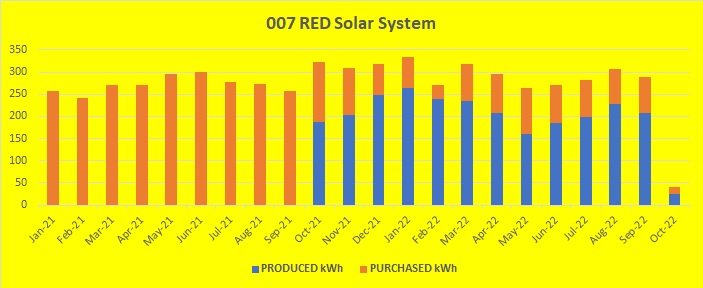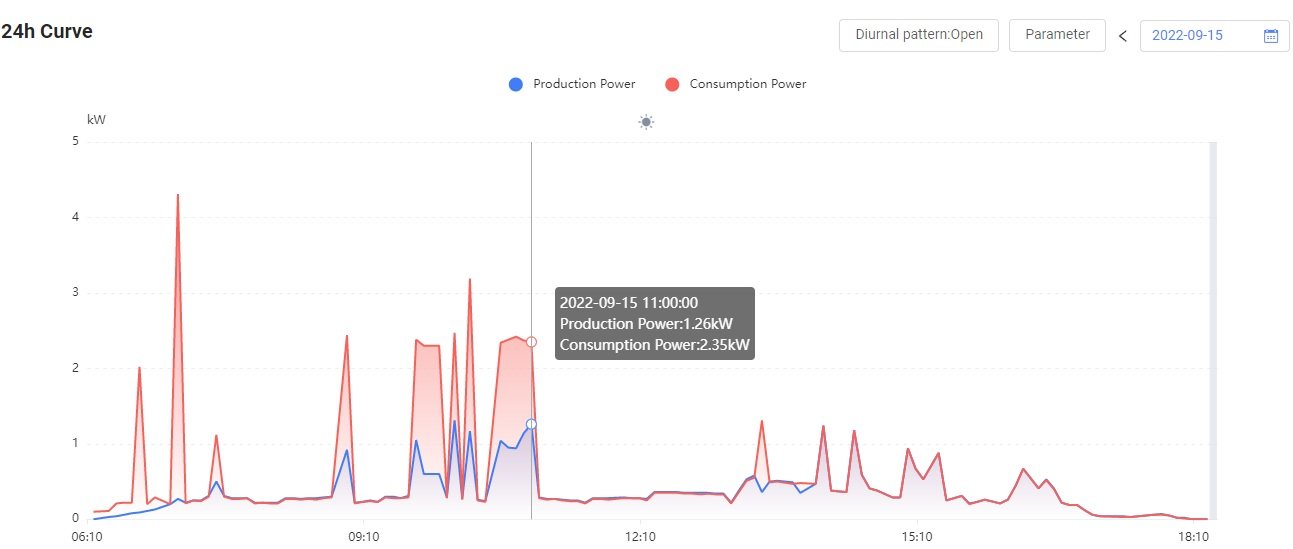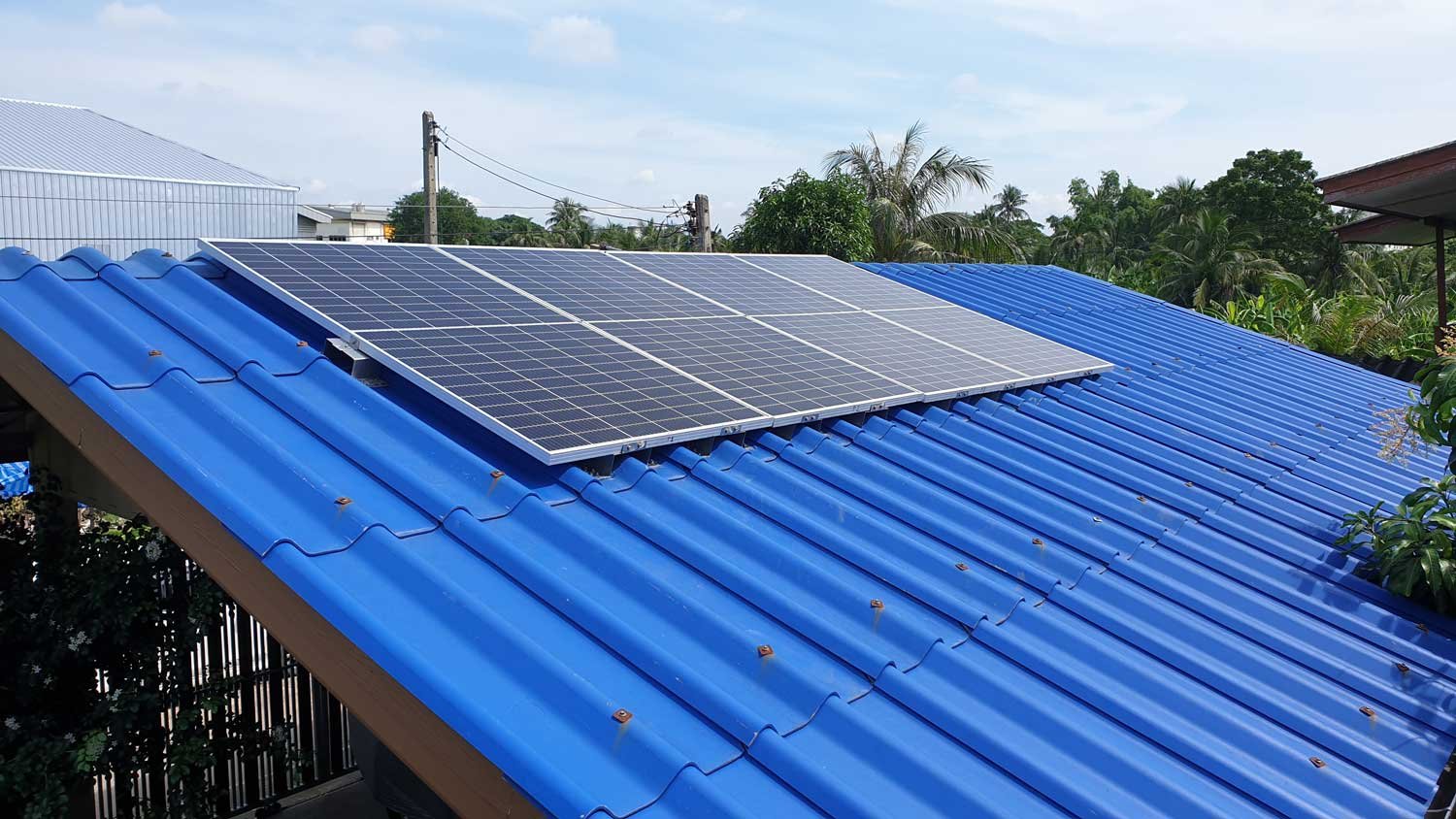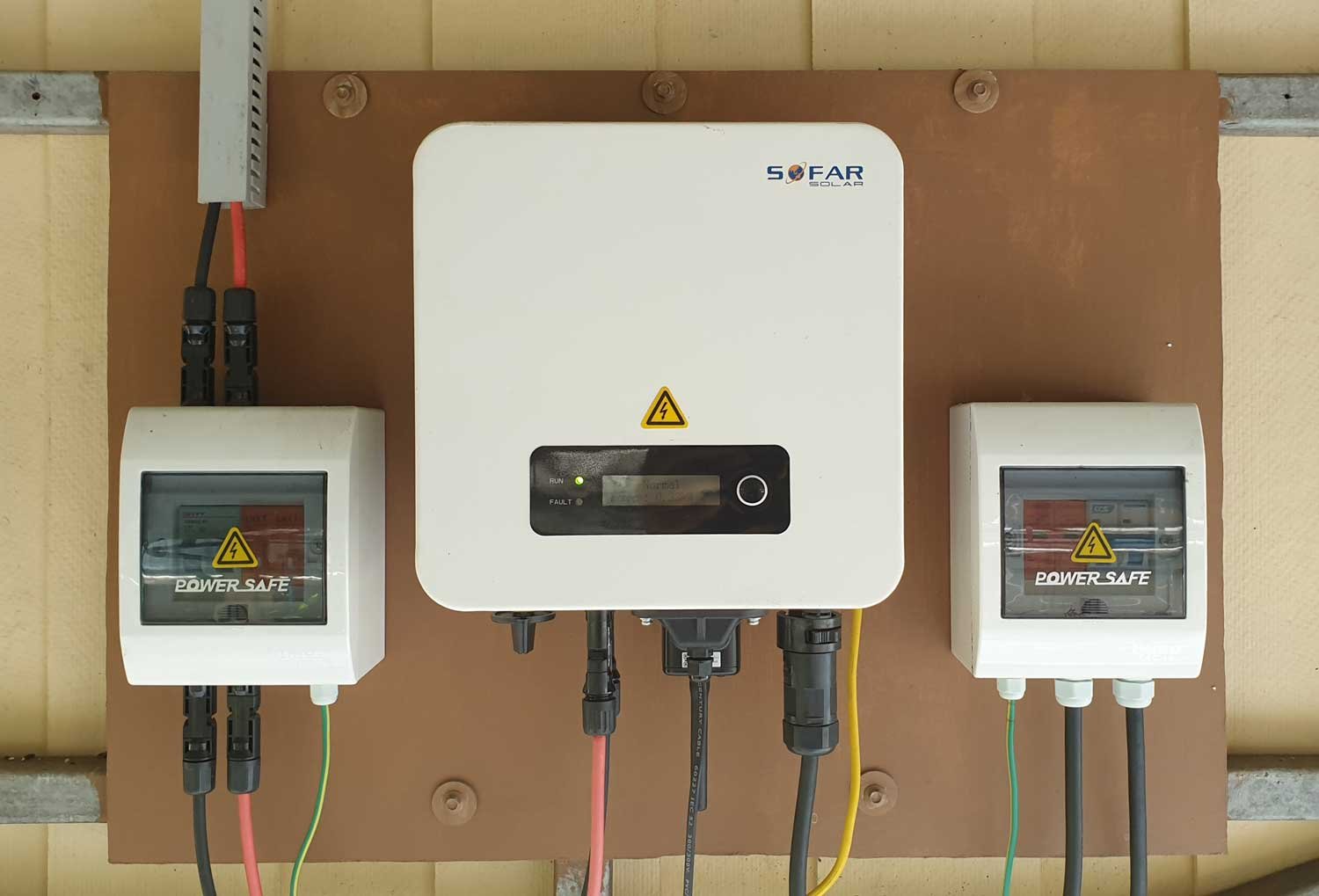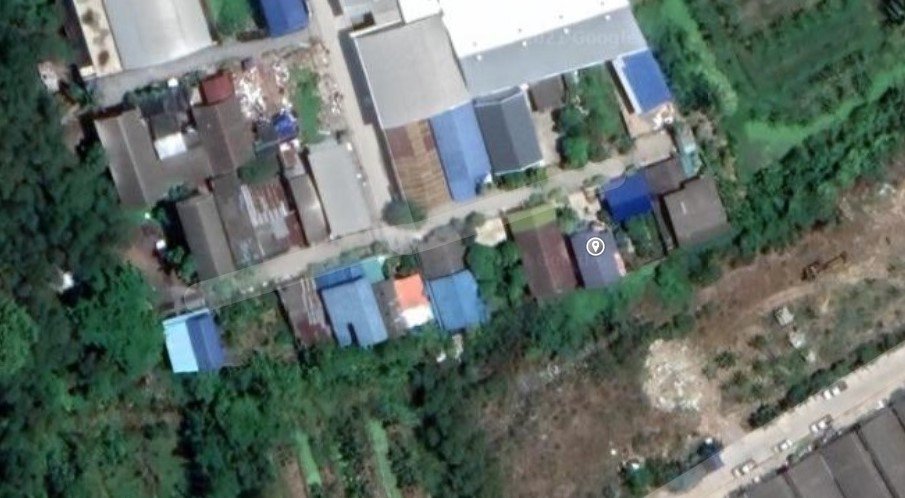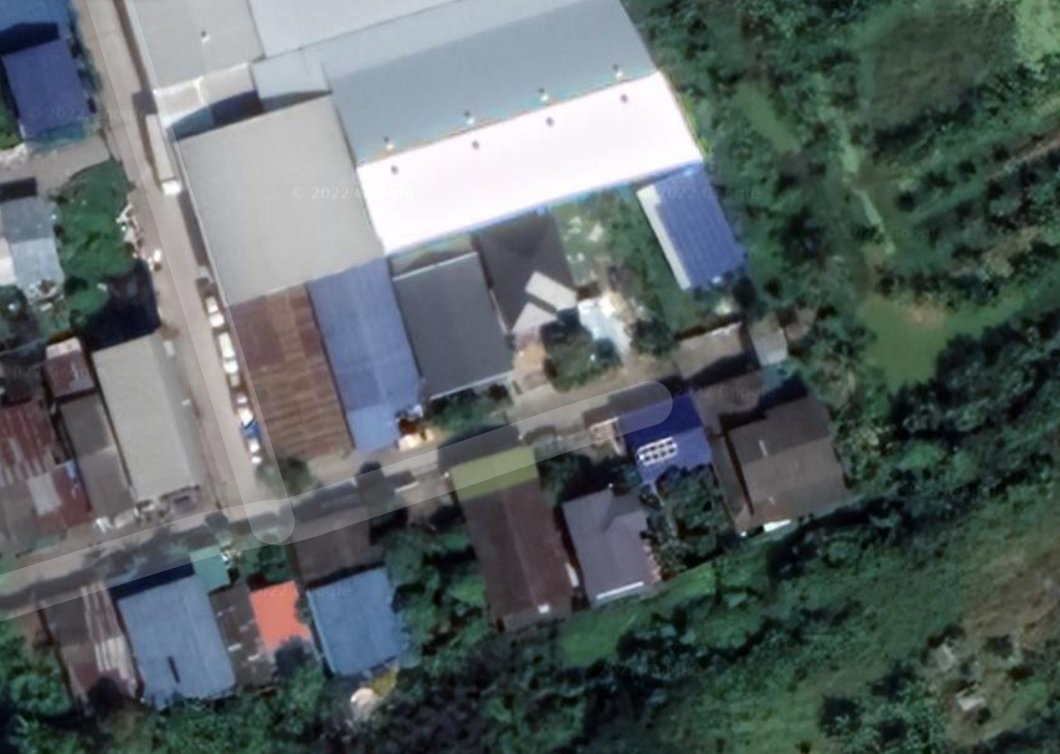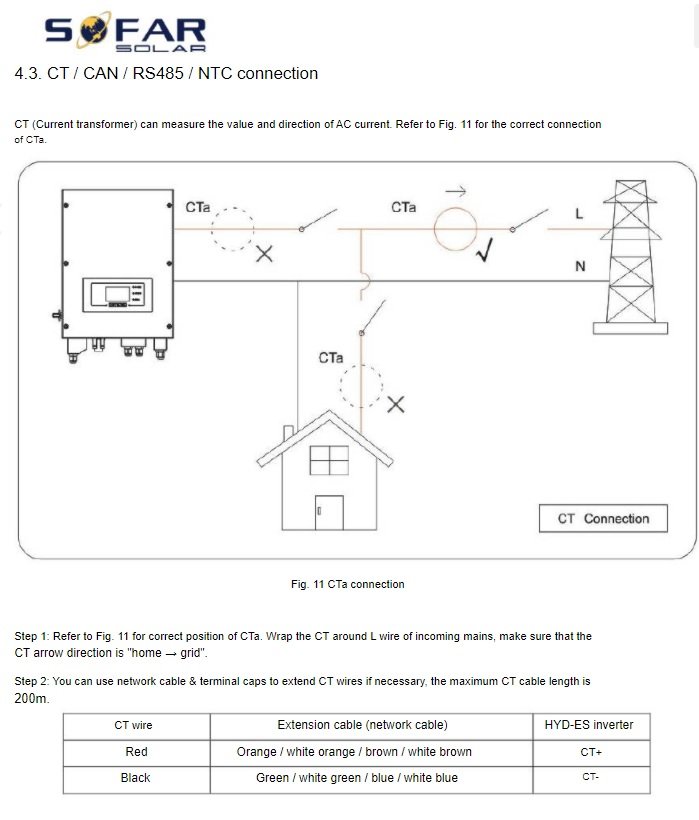-
Posts
933 -
Joined
-
Last visited
Content Type
Events
Forums
Downloads
Quizzes
Gallery
Blogs
Everything posted by 007 RED
-
Congratulations, a really nice installation. As you mentioned, l would definately raise the battery off the floor to avoid any 'rising damp'.
-
"no battery as yet" Just a heads-up...... I seem to remember another forum member who has had a Huawei inverter installed discovered after the fact that Huawei some how tie you into using only their batteries, which then turned out to be a very expensive option. Hope I'm wrong for your sake.
-
Today, 6/10/22, celebrates the 1st ‘birthday’ of my small scale grid tied solar system, so now is an opportune time to take stock and assess its performance during the past 365 days. Background The system comprises 4 x 415W half-cut mono panels connected in series to a 2.2kW Sofar grid tied inverter. The system was a DIY project, so there were no labour costs, just my time and effort. The total cost of the hardware worked out at a tad over 28,000 THB. We (my wife and I) consider ourselves to be ‘conservative’ electricity users with our bills, prior to installing the solar system, averaging around 1,000 THB per month. When I designed the system, I decided that the main objective of the system would be to reduce our electricity bills by approximately 75%. This would ensure that we didn’t get into a situation where the system generates negative readings when the meter reader calls. Under laboratory conditions, the 4 x 415W solar panels should be capable of producing 1.66kW, but of course were not living in a laboratory. In reality, the panels are more likely to produce around 1.25kW in good sunshine. Therefore, assuming 6 hours of good sunshine a day, the system should be able to produce (1.25 x 6) 7.5kWh a day, which is the figure that I considered to be the target for the system. What has the system achieved during its first year of operation? According to the system’s monitoring facility, it has generated 2,590kWh during the past 365 days, or an average of 7.1kWh per day. Attached below is a graph illustrating what the system has produced, and what we purchased, since 6/10/21 to date. I have also included what we purchased during the 9 months prior to the system becoming operational for comparison purposes. Looking at the graph below, it may be seen that we have slightly increased our consumption since the system became operational. I'll blame this on my better half who says that our electricity is free now ????. Since the system became operational it has produced approximately 70% of our household electrical needs, resulting in us only having to purchase about 30% from our local PEA. Although slightly lower than what I had hoped for, I still consider this to be perfectly acceptable, particularly given that the system was running in ‘NO EXPORT’ mode for nearly 3 weeks during May/June (See Note 1 below), and with very overcast conditions during late September/early October due to the monsoon season. Taking the cost of electricity as being 4.2 THB per unit (See note 2 below), the system has saved us (2,590 x 4.2) 10,878 THB during its first year of operation. Return on Investment If the system continues to produce the same output level over the next couple of years, it would be reasonable to assume that it will have paid for itself (28,000 / 10,875) in just over 2.5 years. Obviously if the price per unit of electricity increases, then the Return on Investment will be shorter ????. Problems Not wishing to speak to soon ????, but thankfully during its first year of operation there have been no major problems with the system. Shortly after turning the system on, I discovered that a MC4 cable connector (from the solar panels to the DC breaker box) was getting very warm. Upon investigation I realized that I had not fully crimped the cable inside the connector. Thankfully, this was identified/rectified before any real problems. Definitely my bad. The only maintenance the system has needed was to clean the panels on a couple of occasions to remove dust/dirt, although I’m not sure that this had any profound effect on the system’s performance. Will I up-grade the system? At this stage no. I’m very satisfied with the system’s performance and hopefully it will continue to provide a reasonable daily contribution to our electricity fund. If, and it’s a big if, the local PEA decide to replace our disc type meter with an electronic one, then I will have to seriously consider increasing the number of solar panels and possibly installing a second inverter. Note 1. I had to put the system into ‘NO EXPORT’ mode for almost 3 weeks during May/June because the new build house opposite was nearing completion and the electrical contractor had run the supply cables from the house to the pole outside our house, which also has our meter on it. As we had no idea how long it would be before the local PEA would come to install the meter for the new house we decided to go into a ‘safe’ mode, as we obviously didn’t want the meter installer to see the disc spinning backwards on our meter. Note 2. The figure that I have used (4.2 THB per unit) was the average that we paid per unit during the 9 months prior to installing the system. Note 3. On a light-hearted note. I recall a forum member some time ago suggesting that I was “penny pinching” by saving a few Baht a day. Well, I would ask, other than a ‘Ponzi scheme’, what investment is going to give me nearly 38% interest per annum.? If I was to put 28,000 THB into a basic bank savings account for the past year, I would be extremely lucky to get about 1,400 THB back in interest. Then to add insult to injury, whatever interest is paid would be automatically reduced by X% ‘with-holding tax’. So, at the end of the day a Return on Investment of 10,626 THB could well be considered a worthwhile payback.
- 1 reply
-
- 10
-

-

-

-

-
Was it? I wouldn't be to sure. I would bet 10 2 1 that DHL opened the parcel to inspect the inverter and identify the make/model/serial # which they then checked via the internet against the declared made by the Sofar when they shipped it. As far as I'm aware the major freight players such as FedEx, DHL and UPS have a 'special' agreement with Thai customs insofar that they initially 'act' as per Thai customs in clearing the item and determining the amount of duty and tax to be paid. They then change their 'hat' to that of 'broker' in the negotiations between the customer and themselves as 'customs' regarding the duty/tax payable. It is only on rare or special occasions that Thai Customs actually become directly involved. Its win, win for them. They get paid to ship the item in the first place, then paid a broker's fee by the receiving customer to get customs clearance and then get a nice little percentage commission from Thai customs after they have collected the duty/tax due. I gleamed the above information from my wife's niece who works for one of the above mentioned 'players' a couple of years ago when I imported some first aid equipment from the UK that I was donating to my local rescue foundation. In that case it was not only the duty/tax that they wanted, but import license's from the Department of Food and Drugs Administration for each item. Negotiations with them was like pulling the teeth from a tiger. So you appear to have been very lucky. I hope it works OK when you test/install it. Are you going to have to return the dead one?
-
Lets hope that it works after DHL have 'inspected' it.
-
???? & ???? they come before 12.00
-
Hi @Crossy Any sign of the replacement ????? The suspense is killing us.
-
Sorry...... Not guilty.... I'm definitely on single phase supply.
-

PEA and Solar how low can you go?
007 RED replied to MJCM's topic in Alternative/Renewable Energy Forum
As @Crossy has indicated above, it really never gets generated. My inverter (Sofar 2.2kW GTI) can be set to export from zero to 100%. I have it set to zero and activate 'NO EXPORT' a couple of days prior to meter reader visiting. During the 'NO EXPORT' period the Current Transformer (CT) which is clamped over the live wire between the consumer box in the house and the meter on the pole outside is sending feedback to the inverter as to how much power we are using in the house. The inverter then adjust itself to only produce enough power such that no power is exported thus making the meter spin backwards. Take a look at the graph below produced from the system's monitoring facility the day before the meter reader came. The system was in 'NO EXPORT' mode, and shows power production (blue) against power consumption (red). You will notice that at times the consumption 'hits the roof' and the system tries to match that demand but fails abysmally because there was not enough sunshine hitting the photocells. You will also see that at other times the power production equals the power consumption even when there was good sunshine (mid-day) thus illustrating that power production is matching power consumption. -

PEA and Solar how low can you go?
007 RED replied to MJCM's topic in Alternative/Renewable Energy Forum
Prior to installing our small scale GT solar system (360 days ago), we were purchasing around 280 - 300 units per month. The aim of the system was to reduce our bills by 75% thus ensuring that we never got into negative meter readings. Like @Crossy, I weened the readings down incrementally for the first couple of months by activating the 'NO EXPORT' facility for short periods of time during the month to ensure that some 'bright spark' at our local PEA didn't notice a sudden drop in consumption, Since the system has been operational our bills have been on average around 90 units per month, which is slightly less than I'd hoped for, or approximately 68% solar and 32% purchase. Foot Note: In hindsight I'm not to sure if a sudden drop in meter readings will raise any 'alarm bells' with the PEA. Prior to Covid restrictions being introduced 2 years ago, one of my neighbors (husband, wife and daughter) were living at home and commuting into BKK on a daily basis for work/university. When the travel restrictions were implemented they rented an apartment in BKK and returned home at the weekends. The whole family love their ACs which are on day and night, so their bills prior to Covid would have been substantial and there would have been a considerable drop in the number of units purchased each month once they started living in BKK. I've just spoken to the wife and she advised that they have not been contacted by the local PEA. So, no problem ????... hopefully. -
YES... and if your extra lucky, on Sundays too.
-
No I'm not an electrician. I confess to having no previous experience of solar systems and a fairly basic knowledge of electrical systems dating back to my days at Coventry Polytechnic some 50 plus years ago. In fact, I would happily describe myself as a total nurd when it comes to solar systems. That said, DIY seems to be in my DNA. The inspiration for my project came from @Crossy original thread "How about a solar car port on a budget" (see link below), plus a lot of support from the forum members and considerable additional research on the web. I think that the real motivation for me was that at the age of 74, designing, installing and commissioning a grid tied solar system, albeit a small one, was a great challenge, and I love a challenge. It also helped to overcome the boredom created by the restriction on movement caused by Covid at the time. My wife and I are somewhat conservative users of electricity. Our bills prior to installing the system were around 1,000 THB a month. As mentioned in my post above, the aim of the system was to reduce our electric bills by 75% and over the past year the system seems to be achieving this comfortably. We have the following appliances: 2 x ACs (living room & bedroom) which are only used for a short periods of time when the humidity level goes above 80% - we tend to prefer fans: Fridge/freezer: Front loader washing m/c: Microwave: 55in LCD TV: 3kW water heater in the shower room: LEDs lights in all rooms. The system is grid tied, so its difficult to accurately say which appliances are running off the system during the day, obviously they are not all running at the same time. I haven't considered installing ESS as this would involve a very substantial cost (batteries and hybrid inverter). Apart from the cost factor, such a system is well above my 'paygrade' ????.
-
I have a small scale solar system installed on my car port roof. It comprises 4 x 415W half cut mono panels linked to a 2.2kW PEA approved grid tied inverter. This was a DIY installed project, so no labour costs involved just my time and effort. Total hardware cost was 28,000 THB. The system has been running for almost a year now and during this time it has produced 2,555 units, effectively reducing my pre-installation monthly electricity bills by 75%. This represents a saving of 10,731 THB (based upon 4.2 THB per unit which was the price I paid prior to the system’s installation). Hence my ROI should be in the order of (28,000 / 10,731) = 2.6 years. Obviously if the price per unit rises, the payback time will be shorter ????. If I had a company to do the installation, then the labour costs would be in the order of 100,000 THB, and that's without getting approval from my local PEA. If I wanted a PEA 'approved installer’ to install and obtain certification, then the cost would soar to 200,000 plus THB. In both cases the cost of the hardware would be extra and no doubt considerably more than the 28,000 THB that I paid. As you will see, there is a tremendous difference between the cost of my DIY install and that of a PEA 'approved' installation. Unfortunately, the bureaucracy* and cost of obtaining approval for a system, is no incentive whatsoever for most people here in Thailand to go solar. Unfortunately there is no way that Somchai, on a basic minimum wage, is going to be able to afford the initial capital outlay for a simple system which could meet their basic electric needs. *We Brits invented bureaucracy, Thais have just perfected it.
-

Thailand sets US$46.2 billion tourism revenue target for 2023
007 RED replied to webfact's topic in Thailand News
Strange! Up until now, TAT have always spouted how many zillion Baht will be screwed extracted out of the foreign tourists. Now all of a sudden, they quoting in terms of millions of US Dollars. Is this a forewarning of another 1979 financial crash when tourists had to pay for their Thai flight, hotels and many other expenses in US Dollars at exorbitant exchange rate determined by the vendor ? -
This is very admirable, and I hope they achieve their goal. It's a pity that more countries are not following along the same path. That said, producing vast amounts of electricity from wind and solar farms, which are no doubt heavily sponsored by the government, is a totally different story to installing "solar cells on the roof" as per your original post. It has to be remembered that the average Somchai, on minimum wages is unlikely to be able to afford the initial outlay necessary to install even a small solar system on their roof which might just generate enough to meet their own needs, let alone produce any surplus for them to be able to sell off to their local PEA. FYI... My small scale system comprising 4 x 415W mono panels linked to a 2.2kW grid tied inverter. Total hardware cost = 28,000 THB. This effectively reduces my electricity bill by 75% per month, and all being well will give a ROI in about 2.5 years. This was a DIY installation project, so no labour costs other than my time and effort. If I had a company to do the installation, then the labour costs would be in the order of 100,000 THB, and that's without getting approval from my local PEA. If I wanted a PEA 'approved' installer to install and obtain certification, then the cost would soar to 200,000 plus THB. In both cases the cost of the hardware would be extra and no doubt considerably more than the 28,000 THB that I paid. As you will see, there is a tremendous difference between the cost of my DIY install and that of a PEA 'approved' installation. Unfortunately the cost of obtaining approval for a system, combined with the pittance paid by the PEA for buying any surplus, is no incentive whatsoever for most people here in Thailand to go solar. The only people who realistically are/have considered getting PEA certification for solar system installations are the big companies who can invest in the considerable outlay for a large system. The certification (commission) fees then become a very small percentage of their initial outlay costs. Near where I live there are several large factories (mainly food production). Looking at the satellite images from Google Maps, it is very evident that quite a few have invested in solar systems. I have attached an image below of one such factory. How many solar panels can you count in the roof? As far as I'm aware the factory only works during the day time, six days per week, so its unlikely that they have an ESS for night time use. I do wonder if they sell any surplus to the local PEA and if they do how much they get?
-
Actually its not new and its not only the inverter that has to be accepted by the PEA or MEA, there are a lot of other matters that need their approval for example: Type of solar panel; type of panel mountings; breakers; cables to name but a few. FYI..... The PEA's and the MEA have been able to buy back power from Small Scale Solar Power Producers (SSSPP) for the past 9 years. The only thing that has changed since these regulations were introduced is the amount that the PEA/MEA will pay for any power which they purchase from the SSSPP. In 2013 the Energy Regulatory Commission (ERC) introduced the "Power Purchases from Solar PV Rooftop" Regulations B.E. 2556. I have attached below a translated PDF copy of these regulation, which runs into some 96 pages and sets out in great detail all the requirements. My advice is don't read it before bedtime if you suffer from nightmares as its pure bureaucracy as invented by us Brits. and perfected by the Thais. 20130918_giz_translation_solar_rooftop.pdf
-
Now that's good service... all credit to Sofar for their quick response.... I just hope that DHL don't clobber you for import duty and VAT.
-
FYI.... The attached PDF is an up-to-date list of PEA approved inverters... look forward to seeing their approved list of solar panels and mountings ????.... I wonder if mine and @Crossy mountings will be on the list ???? PEA-InverterList-4-2565.pdf
-
Thanks for posting this article/advert. I have to say I'm a little bit skeptical for a few reasons. Firstly, it would have been nice if the author of the article/advert had provided a link to the specific details of this government announcement e.g. when was it made, which government department made it and details of the new/modified regulations. Having searched the internet I've not been unable to find any other reference to such change, other than this article. Secondly, reading the article/advert and comparing it with the current regulations concerning the supply of electricity to the grid which falls under the 'umbrella' of EGAT, which if I'm correct was introduced in 2013, there is in fact very little difference in the basic requirements concerning the installation of solar systems, except for the 'special' requirements which I've pointed out bellow. Thirdly, according to the article/advert: "solar equipment needs to be verified and approved by the PEA/MEA; this includes Solar panels, inverters and mounting structures". So now the PEA/MEA will not only have a list of approved inverters, but a list of solar panels and mounting fixtures which can be used. "The roof structure needs to be checked/verified by a Thai structural engineer to ensure that it can support the load". This will be good fun. Finding a licenced structural engineer in Thailand will be like finding a needle in a haystack, and if you do find one its going to cost an arm and a leg to get him/her to certify the structure. "... once installed it needs to be registered with the Tessaban...." Why? What has the local authority got to do with someone having a solar panel system on their roof. The above 'new' requirements, in my opinion, are not going to encourage people to go solar in the same way that the original regulations did nothing.
-
Glad that my assumption was correct. Yes 'basic' inverters go into 'sleep' mode when there is no light to activate the photoelectric cells. If you look at the spec data for your inverter you will see a mention of something called 'Start-up Voltage... mine is 70V.... which means that the panels need to produce 70V before the inverter will 'kick into life. At that point the inverter goes into a 'Check' mode and if everything is OK it starts producing AC. FYI... things are different if you have a hybrid inverter that is connected to batteries as these will remain active to monitor/control the 'backflow' of DC from the batteries and convert to AC. Time to relax now.... have another beer.
-
@PR3.... Looking at the time that you posted the above e.g. around 9pm, and taking account that you mentioned "just on the way back from putting out the garbage", I would assume that it was dark. If I'm correct in that assumption, then your inverter would be 'asleep' and doing nothing. This is normal. You should find that once the sun starts to appear on the horizon at around 6:30 am it will, or should, kick back into life. Likewise, once the sun disappears below the horizon at around 6:30 pm the inverter will go into 'sleep' mode again. I hope that I'm right and that you've not got a problem with the inverter. Good luck
-
@PR3.... my humble apology for putting you through any unnecessary stress.... @Crossy is perfectly correct, it is the REFLUX POWER setting which should be set to zero to stop export when a CT clamp is connected to the inverter and not the REACTIVE setting which I incorrectly advised in an earlier post. FYI... I've just scaled the ladder and checked my inverter setting to make absolutely sure. I hope that you've managed to get it to work now. Grovel, grovel ???? ????
-
Sorry to butt in on this interesting post, but there is something than may be worth considering, albeit fairly remote here in Thailand. I think that its fairly unlikely that the PEA will get a drone to do a search to find any untoward solar systems. They would have to know where to look in the first place. However there is something that a lot of local authorities (planning Departments) in the UK have adopted as it helps to ensure that properties are taxed within the correct banding. A friend of mine who live in a very remote rural area decided to have a conservatory built at the rear of the house. The builder (reputable firm) advised that the size of the addition was below that which required planning permission, so construction went ahead. I should add that because of the remote location, the conservatory can't be seen from the nearby road, or any neighbors. Approximately 18 months after the conservatory was constructed, my friend's wife who was at home at the time, had a visit from a local authority planning officer. He advised her that he was aware that there had been an addition to the property and that their records showed that no application for planning permission had been submitted. He asked her to show him to the rear of the house where he inspected, and took photos of, the conservatory. During the conversation with the planning officer, my friend's wife noticed that he had photos of the property which she recognized as satellite images. She asked him where he had got them. The officer advised that they (the local authority) purchase high quality digital images every 6 months from the same company which Google use for their low grade satellite images. He explained that the digital images are fed into an AI system which compares the current image with the image obtained 6 months previously. The system spews out any anomalies which are then investigated. Hence his visit. As it turned out the builder was correct, the conservatory was under the size which required planning permission. Apparently the cost of the high grade digital satellite images is not that great, but I very much doubt that the local PEA will cotton onto this survey method. Take a look at Google maps of your area, and switch to satellite image. You may be surprised. Spot the difference in the images below. The above Google Map image was taken early 2021, the one below taken earlier this year Have you spotted the solar panels.... 4 of them on the blue roof (white with black dots).
-
Hi @PR3... No problem...this is what the forum is for - sharing info and experiences. As indicated in my previous post it must be located somewhere between the consumer unit and the supply meter and it must be attached to the live supply wire. Yes a clamp meter will help identify the live wire. That said, if you put it on the wrong wire, or the arrow on the clamp is facing the house, the CT just wont work and your inverter will export all the time. So if that happens you just swap the clamp to the other wire and make sure the arrow is pointing toward the meter. Initially I thought that I could clamp the CT onto the live cable on the pole outside the house and then run my CT connecting cable along with the few communications cables which pass our car port where the inverter is mounted. I was advised that if the communications companies spot a non communications cable they are likely to cut it and report it to the local PEA because they (the communications companies) have to pay a 'rental' fee to the PEA to use their poles etc. So I ended up locating the CT clamp in the roof space where the cables come in to the house from the pole. I then ran the connecting CT cable across the roof space and across a 4 meter gap to the car port. The CT cable being secured at both the house and car port. The approximate length of connecting cable between the CT clamp and the inverter connection is about 30 meters. When I discussed the wire size with @Crossy, he informed me that he has used 2 x 0.5mm2 cable in the past without any problem, but with his current set up he used 2 x 1mm2 cable for about the same length (30 meters). So because of the cable having to cross the gap between the house and the car port I opted for the 2 x 1mm2 cable and this has worked fine. The light switch that I used was a single pole switch (big enough for her in doors to use). It just need to open and close the circuit between the CT clamp and the inverter. Remember.... when the switch is in the 'OPEN' position your inverter will EXPORT, and when closed it will NOT EXPORT. Hope this helps and good luck. PS.... Just seen that @Crossy has also replied.. he's an early bird too.
-
@PR3 Further to my post above concerning NO EXPORT, I've found this bit of info from Sofar in my files relating to the CT clamp. Hope this helps.
.png.3b3332cc2256ad0edbc2fe9404feeef0.png.8488ab72b8bb2e508209bfe3211b6e08.png)

